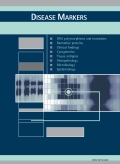Authors: Thalmann, Isolde
Article Type:
Research Article
Abstract:
The inner ear, one of the most complex organs, contains within its bony shell three sensory systems, the evolutionary oldest gravity receptor system, the three semicircular canals for the detection of angular acceleration, and the auditory system -- unrivaled in sensitivity and frequency discrimination. All three systems are susceptible to a host of afflictions affecting the quality of life for all of us. In the first part of this review we present an introduction to the
…milestones of inner ear research to pave the way for understanding the complexities of a proteomics approach to the ear. Minute sensory structures, surrounded by large fluid spaces and a hard bony shell, pose extreme challenges to the ear researcher. In spite of these obstacles, a powerful preparatory technique was developed, whereby precisely defined microscopic tissue elements can be isolated and analyzed, while maintaining the biochemical state representative of the {\it in vivo} conditions. The second part consists of a discussion of proteomics as a tool in the elucidation of basic and pathologic mechanisms, diagnosis of disease, as well as treatment. Examples are the organ of Corti proteins OCP1 and OCP2, oncomodulin, a highly specific calcium-binding protein, and several disease entities, Meniere's disease, benign paroxysmal positional vertigo, and perilymphatic fistula.
Show more
Keywords: cochlea, organ of Corti, gap junctions, proteomics, oncomodulin, Meniere's disease, benign paroxysmal positional vertigo, otoconia, perilymphatic fistula
Citation: Disease Markers,
vol. 17, no. 4, pp. 259-270, 2001
Price: EUR 27.50





